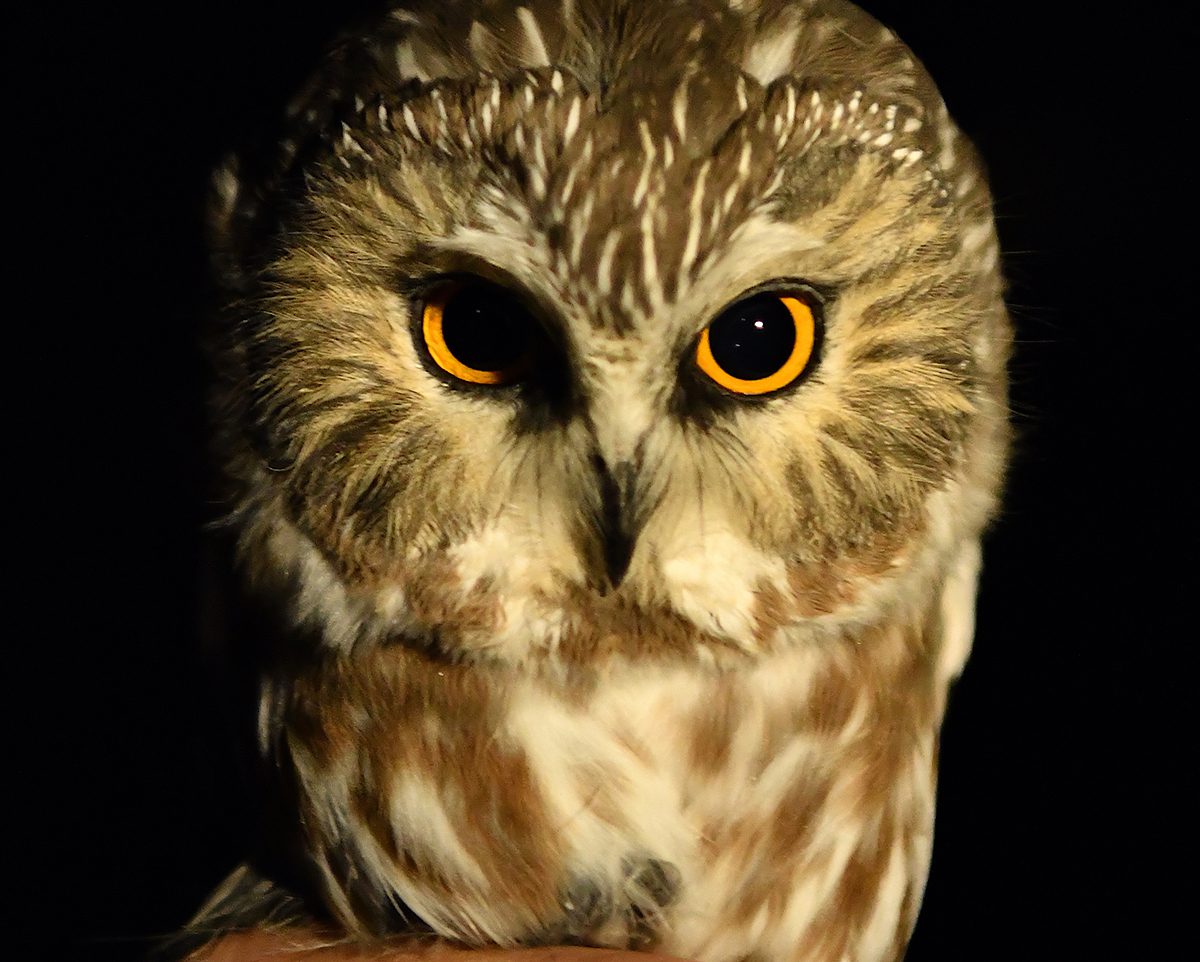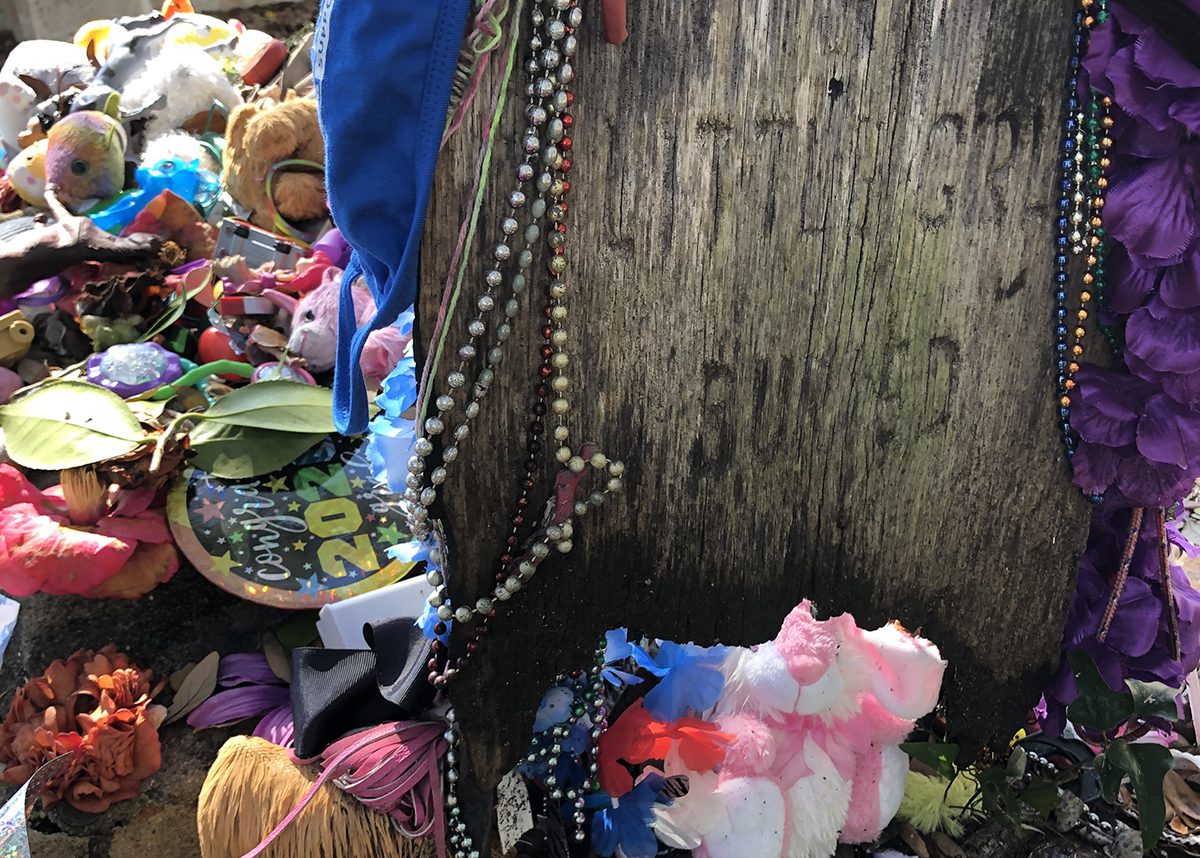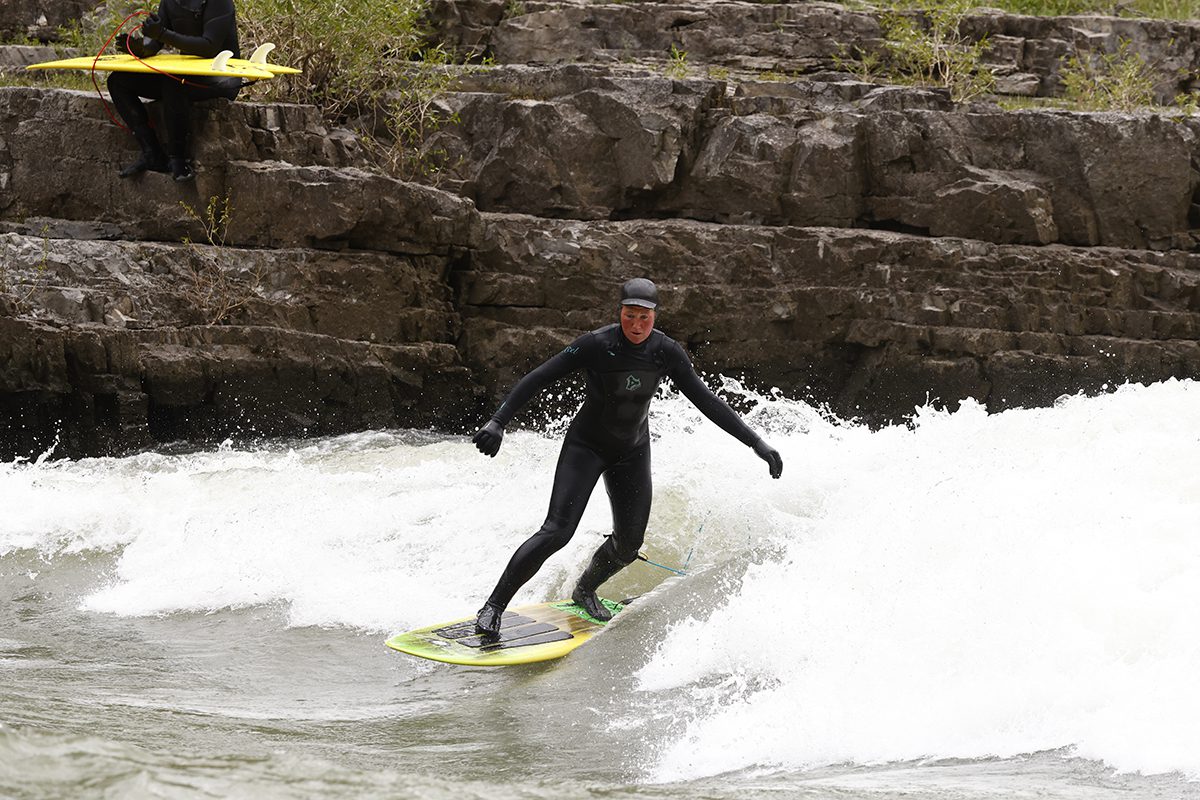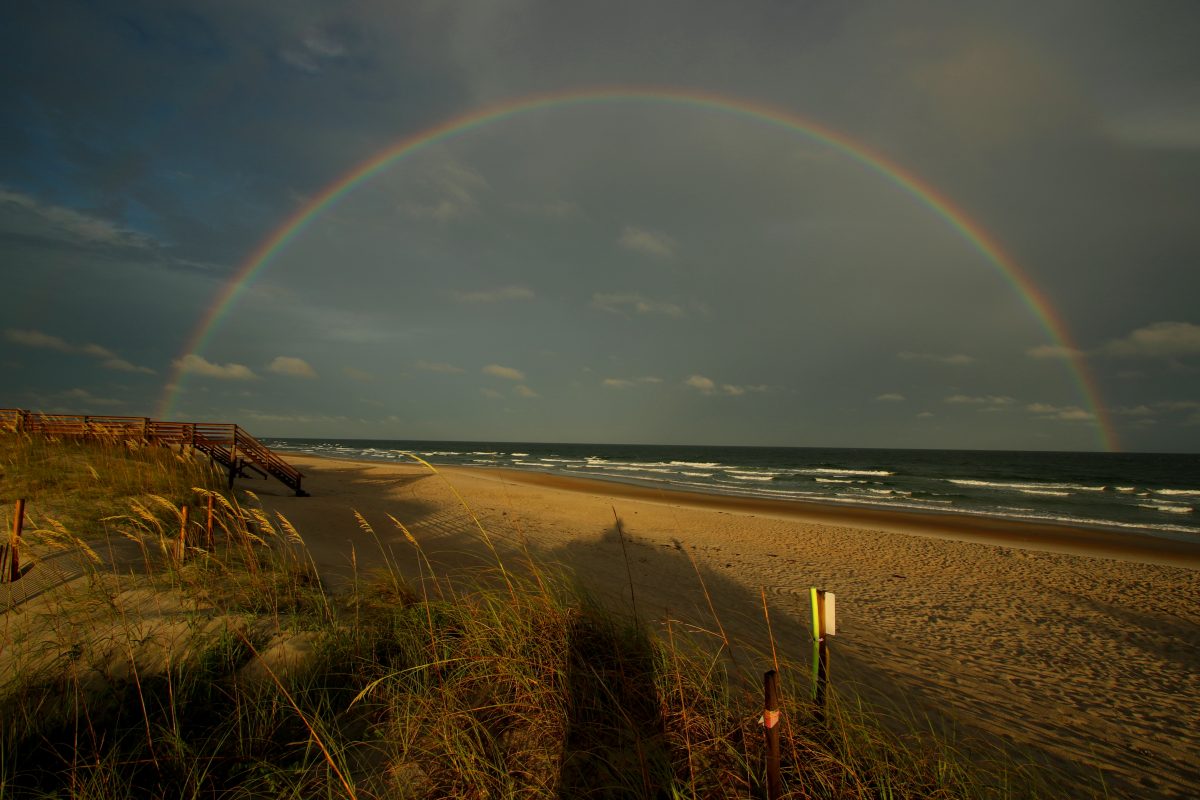
A late-afternoon shower swept in from the northwest and cruised over Bogue Sound, its ominous clouds scraping over the lumpy dunes of the banks, producing a welcoming rain that extinguished the sticky, muggy heat of an oppressive day. As the storm drifted away to the east, with a few drops of rain still trickling from the sky, my wife and I headed to the beach in search of one of my favorite beach critters.
Crossing the dunes, we were greeted by the freshly blooming seed heads of sea oats swaying in a golden light as weak beams from the sun penetrated the breaking clouds. The rain-dampened sand was firm and cool to our bare feet. As we walked toward the water, a least tern urgently flew past with a small fish firmly clamped in its bill as it winged its way to a nearby nesting colony with a meal for its mate or a newly hatched chick. As the rain clouds drifted away like the sails of a ship, a dramatic meteorological phenomenon spilled out over the Atlantic Ocean.
Supporter Spotlight
The colorful arc of a rainbow bloomed like a rare flower across the eastern sky. We stood in awed silence, with the exception of a southwest wind, the crashing sea and the cries of a few shorebirds.
Unlike most rainbows that are delicate and fragile, disappearing in a matter of seconds, this rainbow was strong and vibrant with its complete radiant arc dominating the landscape. The sky above the rainbow was a bit darker than the sky under its arc, creating the illusion of a portal, inviting you to step into its allure. Its beauty was unescapable to all the beachgoers that had returned to the shore after the rain shower. Some stopped to pay homage, their outstretched arms holding cell phones high into the air as if in praise, while they took photos.
Nearby, a young couple, hand in hand, stopped to gaze at the rainbow, then embraced and kissed as if intoxicated by a powerful aphrodisiac. Joy and happiness was now the theme of the day as complete strangers stopped to say hello and comment to each other on the magnificence laid out before them. It was amazing to see how the simple placement of light and moisture could produce such a festive mood of delight.
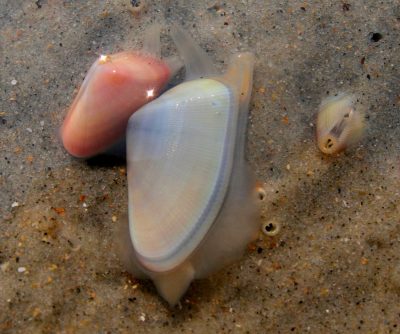
After about 50 minutes, as I stood in the swash zone with my feet sinking into the sand, the rainbow slowly dissolved into a lasting memory. Small waves raced up the beach and washed around my legs and up to my knees, snapping me back to reality.
Around my sand-buried feet I could feel what felt like small rocks. But I knew they weren’t rocks, I had accidentally found what I came to the beach to look for: coquina clams.
Supporter Spotlight
These are those small, 1-inch, colorful, wedge-shaped clams that are seen being washed around by waves at the water’s edge. We see them briefly before their powerful, muscular foot quickly pulls them into the soft sand making them seem to disappear.
During visits to the beach as a child, I remember digging up the tiny mollusks, placing a handful on the surface of the sand and watching them quickly dig back in. Once under the protection of the sand, they will extend their incurrent and excurrent siphons to draw in and expel seawater.
As a filter feeder, the incoming water washes over the gills, which extract oxygen and collect minute particles of algae, detritus and phytoplankton. Once collected by the gills, the food is moved along by cilia, which resembles hair, to be digested.
These bivalves are an important part of the shore-zone food chain, where they are a valuable source of food for fish such as pompano and are favored by migrating shorebirds such as the red knot. Native Americans and early settlers relied on the coquina for food, making a chowder or broth. Even today, some folks will try it as a frivolous cuisine.
At times, during the spring, I have seen large mats of thousands of coquina tightly compacted together and exposed at low tide. Since reproduction is external through the release of eggs and sperm, I assume that this is a mating behavior and increases the chances of fertilization. When the clam is exposed like this it is easy to see their diversity of colors.
Brilliantly colored bands of blue, violet, red, orange, brown, yellow and white decorate these tiny bivalves. Part of their scientific name is variabilis, which refers to their range of colors. Once they are preyed upon by shorebirds, the flashy discarded shells are easy to spot on the beach. Sometimes both halves of the shell are still attached resembling the wings of a butterfly resulting in it also being called the butterfly shell clam.
Even though we might think of shellfish as being sedentary, the coquina clam needs to move daily to position itself for the best feeding opportunities.
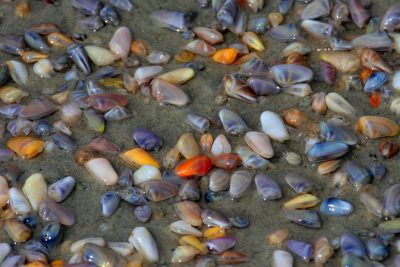
They strategically position themselves in the rough and tumble surf zone, where the suspended particles of food they prefer are most abundant.
But how can a clam move up and down the beach as the tide advances and retreats? Well, “Cowabunga dude,” they go body surfing. Research shows that they move shoreward during an incoming tide and seaward during a receding tide.
About an hour after a low tide as the waves begin to roll in, the clams will hop out of the sand allowing them to ride the incoming waves that wash them up the beach where they quickly dig in and begin filter feeding.
Like all surfers, they like the big waves. It is thought that they can sense and feel vibrations from the tumbling waves and instinctively select the biggest waves that will get them up the beach more efficiently. By riding just a few big waves, this reduces the number of times they are exposed and vulnerable to predators. As the tide falls, they do the same, riding the swash back towards the ocean.
Coquinas have long-been viewed by biologists as an indicator species, signifying a healthy and diverse beach. These clams are vulnerable to beach re-nourishment projects where they are buried under massive amounts of sand and unable to escape. This important food source for migrating shorebirds and fish is then unavailable for a year or two until the area repopulates. As a filter feeder, their ability to remove pollutants from the water is also lost. So abundant have these clams been in the past that their shells created a limestone formation found along the East Coast.
As the soft light of a replete day began to fade, I held a hand full of coquina shells towards the extinguishing light. The multiple hues and the vivid radial bands of color glowed like a rainbow, like little rainbows of the sand.



